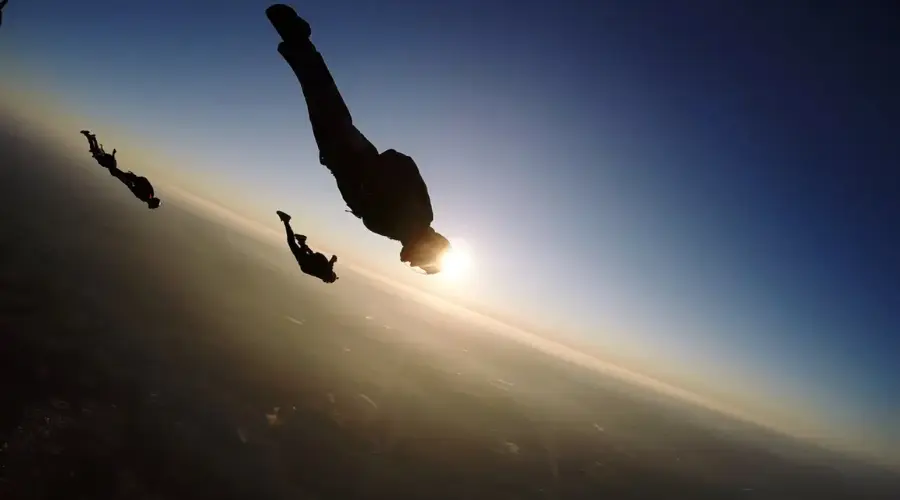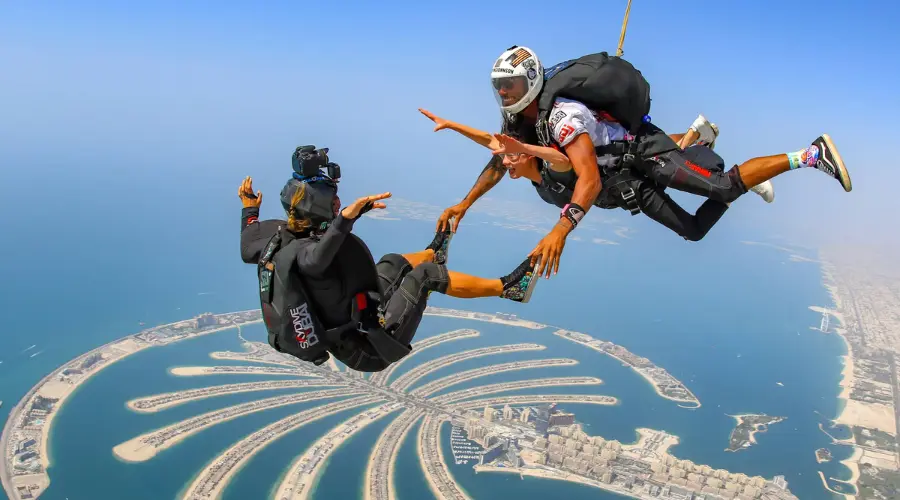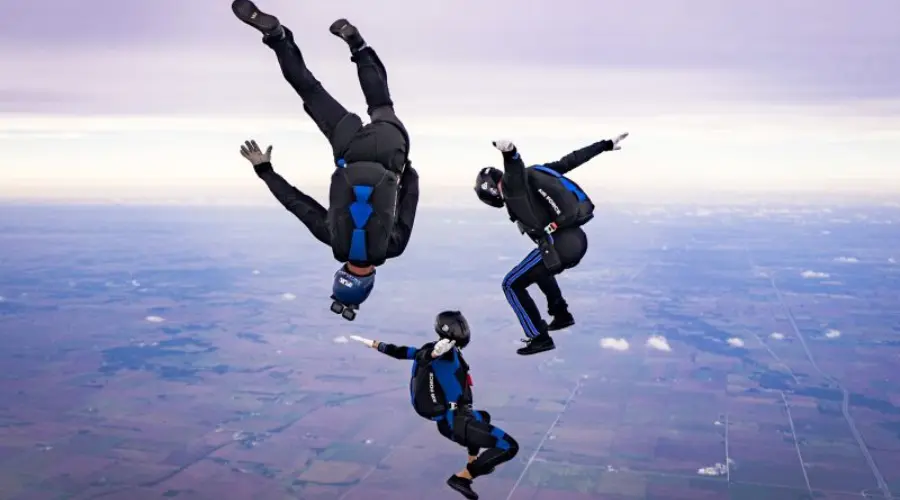A Brief History of Skydiving

The roots of skydiving trace back to ancient times when humans, captivated by the dream of flight, attempted to glide through the air. However, it wasn’t until the 18th century that the first significant developments in parachuting took place. The invention of the parachute is credited to André-Jacques Garnerin, a Frenchman who made the first recorded parachute jump in 1797.
Fast forward to the early 20th century, and skydiving began to evolve into the sport we know today. World War I and II played a crucial role in the advancement of parachute technology, as airborne forces relied on parachutes for tactical purposes. After the wars, military personnel returning home brought their newfound skills and enthusiasm for parachuting to civilian life, paving the way for the rise of recreational skydiving.
The Mechanics of Freefall
Skydiving is an intricate dance with gravity, where the body hurtles toward Earth in a controlled descent. The mechanics of freefall are governed by the principles of physics, aerodynamics, and the design of the parachute system.
Freefall begins when a skydiver exits the aircraft, typically from an altitude of around 10,000 to 15,000 feet. During this initial phase, the force of gravity accelerates the body, creating a sensation of weightlessness. The speed of descent increases until terminal velocity is reached, around 120 miles per hour for a belly-to-earth position.
Parachute deployment is a carefully orchestrated process. A skydiver activates the parachute by pulling the ripcord, initiating a series of events that lead to the release of the parachute from its container. Modern parachutes are designed for stability and control, allowing skydivers to steer their descent and land safely.
Confronting Fear and Embracing the Leap

Skydiving isn’t just a physical feat; it’s a psychological journey that involves confronting fear and embracing the unknown. The decision to step out of an aircraft into the vast emptiness of the sky requires mental resilience and a willingness to challenge one’s comfort zone.
Many skydivers describe their first jump as a transformative experience, marked by a mix of fear, excitement, and a profound sense of accomplishment. Overcoming the initial apprehension is a testament to the human capacity for courage and adventure. Psychologists often highlight the psychological benefits of facing fears, emphasizing the personal growth and empowerment that can result from such endeavors.
The Skydiving Community and Culture
Skydiving is more than just a solo venture; it’s a community-driven activity with a vibrant culture that brings people from all walks of life together. Whether you’re a seasoned jumper or a first-timer, the sense of camaraderie within the skydiving community is palpable.
Drop zones, the designated areas for skydiving, serve as hubs for this community. Here, enthusiasts share stories, exchange tips, and celebrate each other’s successes. The bond forged in the skydiving community is unique, as participants connect over a shared passion for defying gravity and experiencing the world from a perspective few ever dare to explore.
Mesmerizing Landscapes from Above
One of the unparalleled rewards of skydiving is the breathtaking scenery that unfolds beneath as the parachute descends. The panoramic views of landscapes, cityscapes, and natural wonders create a visual spectacle that complements the adrenaline rush of freefall.
Imagine diving through the crisp, azure sky with mountains, oceans, or sprawling fields stretching out below. Each jump offers a different canvas, making skydiving not only an adrenaline-pumping adventure but also a visually stunning experience. The juxtaposition of the thrill of the fall with the serene beauty of the Earth below creates a sensory feast for the adventurous soul.
Safety Measures and Innovations
While skydiving is undeniably thrilling, safety is paramount. The skydiving community is dedicated to ensuring that participants enjoy the experience with minimal risk. Rigorous training programs, regular equipment checks, and adherence to safety protocols are integral parts of the skydiving culture.
Innovations in parachute design and technology continue to enhance safety standards. Advancements such as automatic activation devices (AADs) add an extra layer of security by deploying the reserve parachute if the main parachute isn’t deployed within a specified altitude range. These innovations underscore the commitment of the skydiving community to providing a safe yet exhilarating experience for participants.
Conclusion
Skydiving is not merely a sport; it’s a symphony of courage, thrill, and breathtaking beauty. From its humble beginnings rooted in history to the adrenaline-fueled freefall and the tight-knit community it fosters, skydiving offers a unique blend of physical challenge and emotional reward. As participants leap from planes and navigate the skies, they discover not only the joy of flight but also the profound sense of liberation that comes with conquering the fear of the unknown. So, if you’re ever yearning for an adventure that pushes your boundaries and lets you touch the skies, consider taking the plunge into the exhilarating world of skydiving.

